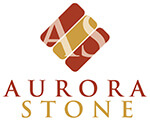
What Stone Should I Use for my Bathroom Vanity Top?
It’s not surprising to find that many homeowners in Australia are preferring to use natural stone vanity tops in their bathrooms. After all, this material offers a unique and organic beauty that no other type of finish can match. Aside from being incredibly durable, stone countertops are heat-resistant, easy to maintain, and stylish. That said, they also have their downsides. For one, these materials are at the higher-end of the cost spectrum.
Of course, only you can accurately weigh the advantages and disadvantages of your bathroom remodeling project. No matter what though, you would want to get the best value for your money. As such, you should work to choose a stone bathroom vanity top that suits your lifestyle, needs, and budget. In this post, we share some tips to assist you in selecting the ideal bathroom vanity tops.
Choosing the Type of Stone for Your Bathroom Counters
Firstly, you should consider how much abuse your bathroom countertops are going to endure. Let’s say you’re going to use the material in a room that is frequented by the whole family. In this case, you’ll need to use something a little stronger, like granite. What’s great about this material is that it’s phenomenally durable.
Moreover, it can resist water damage, which will be one of your biggest concerns. Of course, you’ll need to reseal your granite counters from time to time. However, with proper maintenance, the surface will be highly resistant to staining, scratches, humidity, and running water.
On the other hand, if you are on a tight budget, you can also opt for engineered stone. Here at Aurora Stone, we use premium quality resin, ensuring that the material is impervious to moisture and water. What’s more, we offer this product to homeowners who have little time to maintain their bathroom benchtops. Indeed, engineered stone is perfect in heavy traffic and moisture-prone areas.
Meanwhile, if you are choosing a stone material for bathrooms that receive moderate to light usage, marble can be an excellent choice. It can make your master ensuite or guest bathroom luxurious and elegant. This material can indeed be problematic in kitchen areas because of the acidic liquids and foods. In the kitchen, you may need a homemade marble etch remover to keep the material in top condition. On the other hand, in the bathroom, that is less of a problem. You need to know how to properly care for marble benchtops so that you can prevent water from seeping into the pores.
While travertine and limestone can be stunning to look at, we do not recommend them for the bathroom. These materials can be very absorbent, and you’d need to reseal them more often. After a while, the frequent maintenance can become quite bothersome. Travertine is best used as a décor accent in the living room, just like onyx. If you want, you can even use it as a stone cladding over your fireplace.
What Finish Should You Choose?
After selecting the stone to use for your bathroom benchtops, it is now time to determine its finish. If you want a striking and elegant look, go for a polished finish. You have the freedom to select the level of polish you desire. With some options, you’ll be almost able to see yourself on the surface of the stone! In saying that, you should also know that scratches are more evident on a polished finish. So, you might not want this option if you’re working on a high-traffic bathroom.
Another fantastic option for your bathroom countertops is honed marble. Honed stone tiles come with a matte finish, allowing scratches to appear less visible on the surface. On the other hand, the finish can also make the surface more susceptible to water damage. Thankfully, you can mitigate this by effectively sealing the material regularly. Also, you should know that smudges and fingerprints are more visible on honed stone tiles. The smooth, satin finish can make your bathroom countertops more elegant. It is ideal for bathrooms that endure lower traffic.
If you are looking for an excellent middle ground for the two options, you should consider choosing a leathered finish. Smudges, fingerprints or scratches are not readily visible on the surface. Moreover, the finish seals off the pores instead of leaving them exposed. Of course, you would need to reseal a leathered stone from time to time. However, the procedure is not as often required as other materials. You should note that because of the uneven surface of this material, deep-cleaning can be a challenge. Expect to deal with lots of tiny fissures and pits.
Some Reminders When Cleaning Your Bathroom Counters
Of course, the vanity tops in your bathroom will never endure the same amount of messes and spills that your kitchen benchtops do. However, you still need to be cautious about how you clean them. Some bathroom cleaners can be abrasive and harsh, which can damage a countertop easily and strip off the finish.
You can use harsh sponges and scrub brushes when cleaning the tub. On the other hand, these cleaning tools may be too intense for use on your stone benchtops. So, we suggest that you use a pH-neutral cleaner specially formulated for the material. Moreover, remember to use a soft cloth when cleaning spills and excess water.
When you want to improve the look of your bathroom, using stone materials is one of the best ways to do so. The simple glimpse of a marble vanity will lead you to understand why it was one of the most exceptional choices for bathhouses in ancient times!
If you need assistance in choosing the ideal material for the counters in your bathroom, please do not hesitate to contact Aurora Stone. Call us today to schedule your free measure and to get your free quote!

